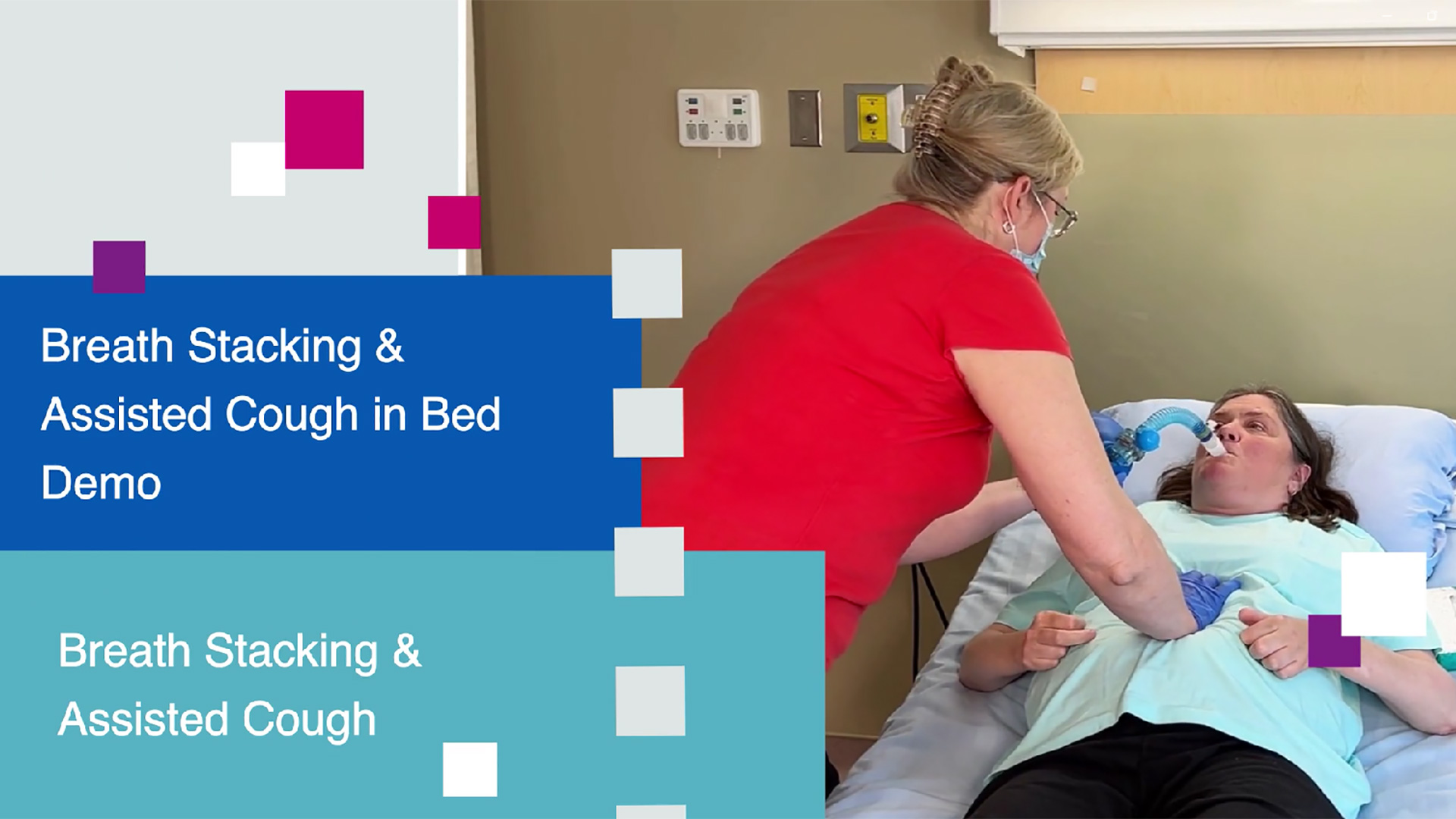The Lung Volume Recruitment bag – or LVR – and the attachments are available as a kit.
Here are two vendor options in Canada:
- Medigas carries the Mercury Medical Lung Volume Recruitment Kit, product number is TRSM161034502 and price is approximately $60 CAD, https://www.medigas.com/en.
- ProResp sells the Mercury Medical LVR kit by the box of 6, https://www.proresp.com/.
You may also receive an LVR kit from your Respiratory Therapist which they put together for you.
The LVR kit cleaning process may vary depending on the brand of LVR kit. Some LVR kits have a two-piece stackable valve so the two parts can be pulled apart and cleaned separately. The kit we’re using in this demo series uses a one-piece stackable valve and flex tube. This means you simply disconnect the flex tube from the bag and wash and disinfect the valves and flex tube without separating them.
Here are the steps to wash the kit:
- fill a sink or large bowl with a mild soap and water mixture
- disconnect the mouthpiece and tubing from the resuscitation bag
- wash the mouthpiece and flex tube and stacking valve
- rinse in warm water.
The Breath Stacking LVR valve and flex tube should be cleaned once a week. If you have a cold or a chest infection you may want to clean the equipment more often. If you’re not going to disinfect the parts, let them air dry, before reassembling the kit.
Note: Do not towel dry or use a blow dryer to dry the parts.
To disinfect the flex tube, stacking valve and mouthpiece, mix a solution of 1 part vinegar and 3 parts water in a bowl. Disinfecting the parts is especially important if you’ve got a cold or chest infection.
Here is the process to disinfect the flex tube:
- soak for the washed parts for 30 minutes
- rinse all the pieces in clean water and let them air dry only on a towel (no hair dryer or towel dry!)
- once all the pieces are dry, put the kit back together making sure the small capped valve on the top of the stacked valve is closed.
If it feels like the resuscitation bag is not delivering the full volume of air it may have a leak.
To test for leaks, if your LVR bag has a vent on the head, be sure the cap is screwed on. Then, with one hand cover the top outlet of the bag, with the other hand squeeze the bag. No air should leak from the bag and the bag should not deflate. If the bag deflates or if a leak is heard the bag needs to be replaced. Contact your Registered Respiratory Therapist or home respiratory company to order a replacement.
Be sure to watch all the other Breath Stacking and Assisted Cough videos in this series and speak to your healthcare team if you think Breath Stacking and Assisted Cough is something you should make a routine.
Remember: These LVR kits are not intended for use as resuscitation bag.
Additional notes for healthcare providers:
- Use of the LVR kit is not recommended in the presence of hemoptysis, recent or current barotrauma, bullous emphysema, severe obstructive pulmonary diseases, hypotension.
- Do NOT use the LVR kit if the individual has an inflated tracheostomy cuff or endotracheal tube.
- Individual assessment and precaution should be taken if any of the following exists: severe reflux, IVC filter, Kyphoscoliosis, or Baclofen Pump.
- An Assisted Cough should not be done for any individuals that are pregnant or that have had recent abdominal surgery or have an abdominal aneurysm.
We hope you enjoy this video series and watching these demonstrations. If you have any questions about what you learn, be sure to reach out to your healthcare team or service and resource providers like Spinal Cord Injury Ontario.
We would like to acknowledge and thank the people with lived experience who contributed their insights and tips to the development of this video series:
- Ron Rattie, Peer Support Program Coordinator, Spinal Cord Injury Ontario
- Sandra Burton
- Matt Sagan, Peer Support Volunteer, Spinal Cord Injury Ontario
We would also like to thank Hamilton Health Sciences staff who provided clinical subject matter expertise, source content and expert review of this video series:
- Renata Vaughan, RRT Senior Registered Respiratory Therapist, Hamilton Health Sciences Regional Rehabilitation Centre
- Jennifer Duley, APP Advanced Practice Physiotherapist, Acute Spine Unit, Hamilton Health Sciences.
This series was designed by Marty Doupe, Learning Architect at SCIO.




